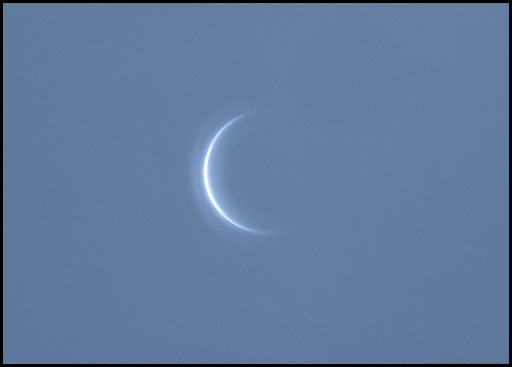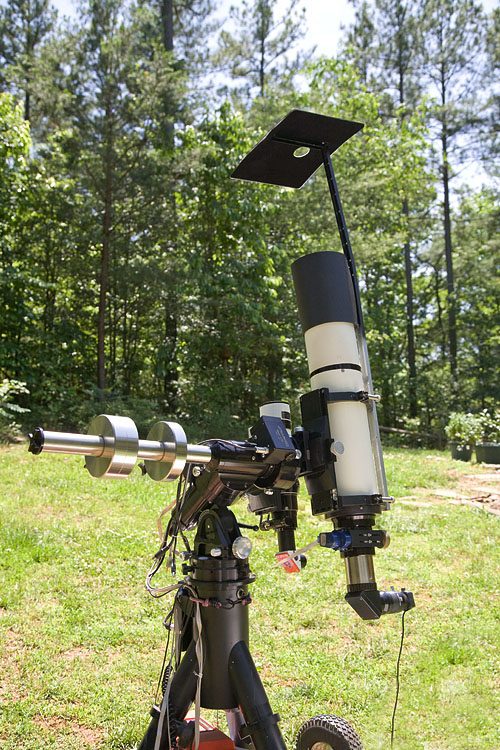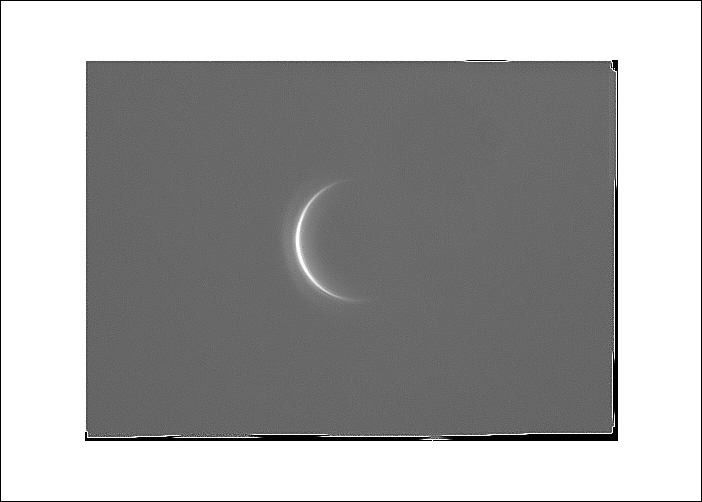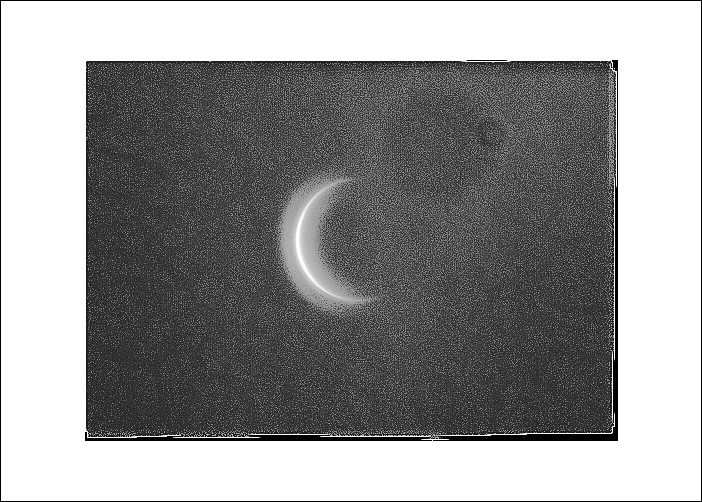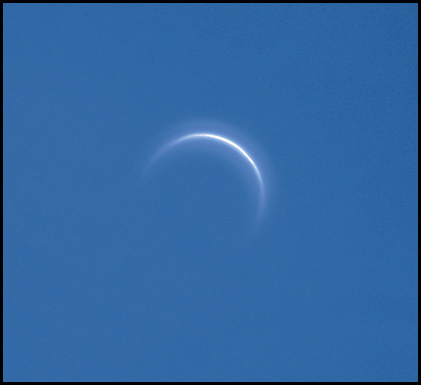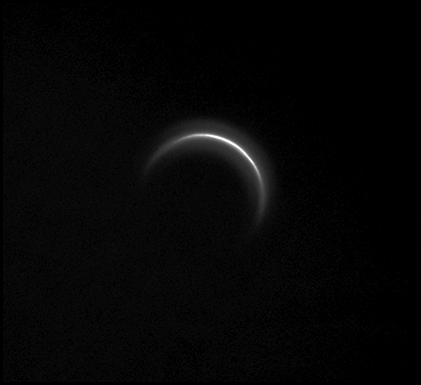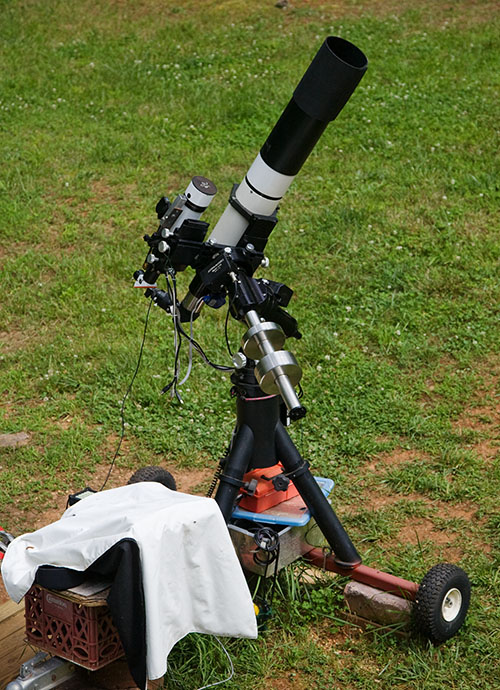|
Best 500 of 2500 frames
Extremely aggressive image processing shows the upper and lower cusps extending beyond the poles, but there's nothing remotely pretty or subtle about the resulting image. [See below.] The trick is not just showng that, but showing it to good effect. Maybe tomorrow, maybe the next day. From accounts of other inferior conjunctions, things appear to get interesting below 8° and fascinating below 6°. Around 2° or 3°, who knows, but by then it'll take some lucky skies to get good pixels. Late this morning and into the early afternoon, I tried out some elaborate shading equipment. I roughed this gear out yesterday with black mat board and a pole. Today I rebuilt it in aluminum channel, acrylic, and ProtoStar flocking paper:
It's shown here testing the reduced aperture without a lot of effort to control glare. So far, the best images result from extending the dewshields (stock metal plus aftermarker flexible shield) as far as possible and using the full aperture of the A-P refractror. As Venus moves closer to the Sun, I expect to need something like this to anchor more elaborate shielding. I shot some images today through that 2-inch hole, with and without auxilliary curtains, shades, garbage bags, rolled up ProtoStar flocking paper, etc. When that sort of thing is needed, it'll be ready, but so far the reduced aperture hurts more than the extra shielding helps.
Wider selection of the same image. Note slight extensions of the cusps.
06/01/2012. A mostly cloudy day with some blue sky blowing through in the early afternoon. I had some arguments with the hardware, but was mostly ready when given a chance to grab some 400-frame clips. Today it was the 9th clip that offered the best seeing and exposure:
0.69% illuminated, 6.78° east of the Sun
From the lens forward:
As clouds go by... here's the last clip of the day compressed for web-viewing (the original is nearly half a gig). I was trying to take video between the clouds, but sometimes they interfered, and sometimes they added something of their own. Here's cloud-wrapped Venus glimpsed through the clouds of Earth on a late spring afternoon in the northern hemisphere:
Not moving? Mouse over or click on it.
06/01/2012. Yesterday's inverse: a mostly clear day with a few quick cloudy patches, with, alas, the jet stream right overhead. Venus is within 5.5° of the Sun, but it still came up easily from the blue sky. I have never experienced worse seeing, however. In fact, it was pretty hopeless until I installed the 2-inch screen shown at the top of this page and added an aluminum foil barrier over exactly that part of the objective lens where the Sun still fell. Then I saw decent, but not great, images. And still the circle is not closed. I took 45 clips at various exposures, gains, and gamma settings and processed them as aggressively as I could imagine. I could get just short of a 270° arc, but never a full circle. I think my sky is simply not clear enough. (An excellent photo from a mountain location in 1964 was made with Venus 8° from the Sun, so it is not proximity that is lacking.) Now and again while watching the video come down, I thought I glimpsed a full circle, but the images never bore this out. There are a lot more frames (~75,000!) to inspect, but I am thinking I am out of luck this time. Tomorrow, Venus will be much deeper in the solar glare, the weather is not particularly auspicious, and I am having some hardware glitches with the keypad (more when I know more, and some show and tell of today's best efforts).
:: top ::
|
© 2011, David Cortner
